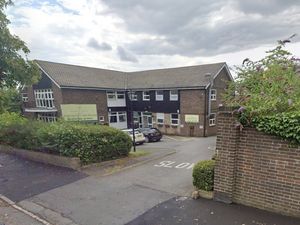West Midlands house price growth exceeds UK average
The rise of flourishing new job sectors, including the arts and science and technology, is leading to an increase in housing demand in the West Midlands.

Property consultancy Knight Frank says that over the last five years house price growth in the region has outpaced the rest of the UK, as new employment opportunities drive demand for new homes.
New sectors are set to power the region’s economy over the next decade as the West Midlands moves away from its traditional manufacturing heritage and attracts new employers.
Jobs in the arts, entertainment and recreation are set to grow 21 per cent by 2030, while those in professional services, science and tech will rise 10 per cent, according to Knight Frank analysis of Oxford Economics data. In contrast, the region’s manufacturing sector is forecast to decline by 17 per cent across the same period.
Between June 2016 and June this year the average house prices in the West Midlands increased by 32 per cent, compared with 25 per cent across the rest of the UK. Birmingham house prices rose 29 per cent over the past five years to £208,241.
As the UK's second largest city, Birmingham will be key to meeting the West Midlands’ housing delivery goals. Analysis shows the city is on track to deliver around 12,000 new units over the next five years. Given the city's annual target of 4,829 new homes, this suggests that it may need to deliver more units in the outer suburbs and release more greenfield land to meet delivery targets.
However, this strategy is not currently favoured by the West Midlands Combined Authority, who say they are continuing to pursue a brownfield-first approach to housing by using government funds to unlock derelict industrial land for development.
Birmingham's annual housing target rose by 35 per cent in December 2020 as part of a wider central government strategy to increase the supply of housing in urban centres.
Currently more than 6,000 housing units are under construction in Birmingham.
Mark Evans, head of regional residential development and investment at Knight Frank, said: “Despite the pandemic, there is a renewed focus on the West Midlands, which as a region is set to play an important role in the UK’s post-Covid-19 economic recovery. New employment opportunities are emerging, which is driving demand for housing from the region’s expanding workforce.”
West Midlands Mayor Andy Street added: “We know the West Midlands will need 215,000 new homes by 2031 and we are on track to deliver that. However, this must be done with a brownfield-first approach, which also looks to build more affordable and more zero-carbon homes through the use of modern methods of construction.”
The population of the West Midlands, which currently stands at 5.9 million, is set to grow by another 225,000 over the next decade. Average earnings across the region have already grown 14 per cent over the past five years, while in Birmingham they have increased 16 per cent.




